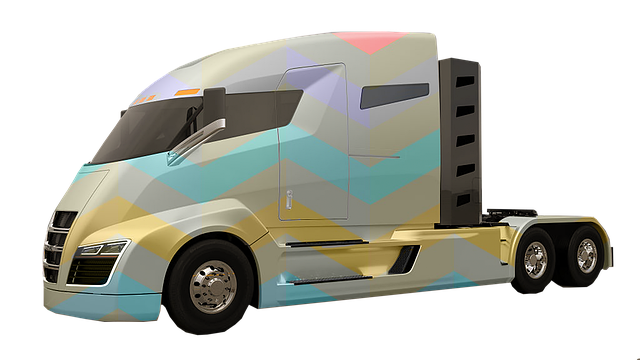Looking to register your car in California? This comprehensive guide walks you through the entire process, from understanding state requirements to securing your vehicle’s unique Vehicle Identification Number (VIN) for verification. Gather essential documents, perform a VIN check, choose your license plate design, and submit your application along with necessary fees to the DMV. Streamline your registration experience with these easy steps and ensure compliance with California laws.
- Understand California Car Registration Requirements
- Gather Necessary Documents for VIN Verification
- Perform Vehicle Identification Number (VIN) Check
- Select A California Auto License Plate
- Submit Application and Pay Fees to DMV
Understand California Car Registration Requirements

Before registering your car in California, it’s crucial to understand the state’s specific requirements. One critical step is ensuring your vehicle has a valid and accurate Vehicle Identification Number (VIN) verification. This process confirms the authenticity of your car’s details, including its make, model, year, and ownership history. In California, this often involves obtaining a Certificate of Title from the California Department of Motor Vehicles (DMV).
Additionally, you’ll need to ensure that any previous liens or issues with the vehicle are resolved. A mobile vin inspection or verification service can streamline this process by providing on-site assessments and documentation, making it easier for you to meet California’s car registration criteria efficiently.
Gather Necessary Documents for VIN Verification

Before you begin the car registration process in California, it’s crucial to gather all the essential documents, especially for the Vehicle Identification Number (VIN) verification. This step is a critical part of ensuring your vehicle complies with state regulations. You’ll need to provide proof of ownership, which can be done through various means such as a title, registry, or bill of sale. Additionally, have your vehicle’s registration from the previous state readily available.
For a seamless VIN verification process, consider employing a mobile vin inspection service or enlisting the help of a professional vin verifier. These services offer convenience by coming to you, making it easier to complete your paperwork without delays. Having all these documents prepared will significantly streamline the car registration procedure in California.
Perform Vehicle Identification Number (VIN) Check

Before registering your car in California, performing a Vehicle Identification Number (VIN) check is a crucial step to ensure everything is above board. This process involves verifying the VIN data, which includes important information about the vehicle’s history and specifications. You can conduct this check through various official channels, including mobile vin inspection services that offer convenient, on-site verification.
Using a mobile vin verifier or performing a mobile vin verification makes the process efficient as it allows you to cross-reference the provided VIN with reputable databases. This ensures that the vehicle is not stolen, has no outstanding recalls, and meets all legal requirements. By doing so, you can rest assured that your registration process will be smoother and less likely to encounter delays or issues.
Select A California Auto License Plate

When registering your car in California, selecting a license plate is an important step that should be given due consideration. Not only does it serve as a unique identifier for your vehicle, but it also adds a touch of personal style. Choose from a variety of designs and colors available at your local Department of Motor Vehicles (DMV) office or opt for custom plates offering more options. Remember to keep your plate selection within legal limits, ensuring it complies with size and content requirements set by the state.
A crucial part of this process involves completing a vin verification (vehicle identification number) check. This step is essential to confirm the authenticity of your car’s VIN inspection. You can arrange this through the DMV or consider a mobile vin inspection service for added convenience. By ensuring your vehicle’s details are accurate and verified, you’ll streamline the registration process and avoid any potential issues down the line.
Submit Application and Pay Fees to DMV

Once all necessary documents have been gathered, it’s time to submit your application and fees to the California Department of Motor Vehicles (DMV). You can do this in person at any DMV field office or online through their secure website. The process involves filling out Form MVC-45, which is the Application for Title and Registration. Here, you’ll provide details about the vehicle, including its make, model, year, and VIN (Vehicle Identification Number) verification. This step is crucial to ensure the accuracy of your car’s registration.
For a smooth and efficient process, consider using a mobile vin inspection service. A mobile vin verifier can come to your location, perform the vin verification on-site, and even handle any title transfer issues. This saves you time and effort, especially if you’re busy or have multiple vehicles to register. Remember, accurate VIN information is essential for a successful registration, so ensuring it’s done right from the start is beneficial.
Registering a car in California involves understanding state requirements, gathering essential documents for VIN verification, performing a Vehicle Identification Number (VIN) check, selecting license plates, and submitting an application with the DMV. By diligently navigating these steps and ensuring accurate documentation—including proof of insurance, ownership transfer, and passing emissions tests where applicable—you’ll be well on your way to legally operating your vehicle in The Golden State. Don’t forget to keep your registration up-to-date for a seamless driving experience. Happy motoring!
